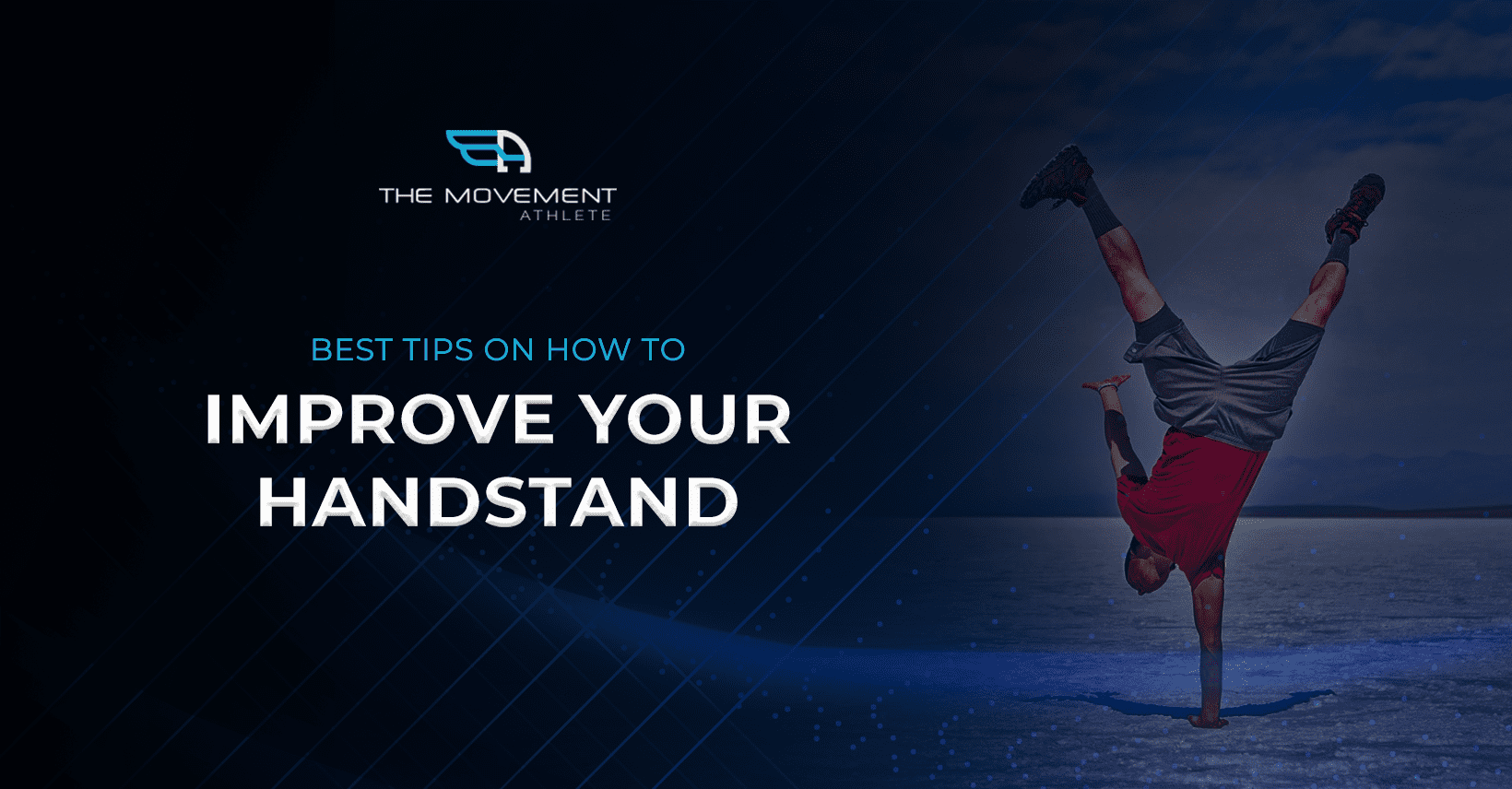
Join the tribe of Movement & Calisthenics Athletes – people just like you that are working with their own body weight to get strength, lose fat build muscle, recover from injuries and live their best lives!
📌Common mistakes to avoid & tips to
improve your handstand
You need to watch out for these possible mistakes that you be committing.
Whether you’re an advanced or a beginner, it won’t hurt if you check out this list.
Avoid the mistakes and focus on perfecting your form. Here are also the ways of perfecting your handstand. A perfect form gets you stronger faster and safer.
1. ❌Banana Handstand
This is a very common mistake when trying to do a straight body handstand.
Banana handstands are commonly caused by weak core which leads to the arching of the back forming a banana shape handstand.
I suggest brushing up with your endurance exercises to tighten up the core.
Disclaimer: Curved handstands are only incorrect if you’re aiming to do a straight handstand. Curved back handstand could be done intentionally as a handstand variation.
2. ❌Relying too much on strength
If you lack technique or mobility, sometimes strength pushes you still to hold a handstand. The problem here is that your form suffers.
When you’re relying on strength, you’ll notice that your handstand is diagonal rather than straight and unnecessary weight is loaded on your anterior deltoids. This is a very taxing position. This is was my main problem when I was learning handstands and it made me tire out so fast!
To overcome this, you need to train your shoulder mobility stack your shoulders directly over your whole body rather than forming a diagonal line.
3. ❌Arms not straight
If you have bent arms performing a handstand, you’ll be using too much tricep and bicep muscles. These muscles are much smaller compared to your shoulders that should be carrying most of the load.
Just practice your straight arm and reset your repetition if you’re arms are bending. Keep them locked straight.
4. ❌Neck strain
This is quite common especially if you’re still afraid of tipping over. Keep your neck relaxed. Ideally you need to have a neutral head position where you are looking upside down.
You can still tilt your head downwards just a bit when first learning. Just keep your neck relaxed and your eyes looking at your hands for additional balance assistance.
5. ❌Not breathing
This goes for every type of exercise, BREATHE.
Don’t hold your breath just to extend your set a bit more. This promotes s very bad habit and doesn’t really help mastering the move.
Your body needs oxygen to be able to use energy for your whole body. Holding your breath might lead to higher blood pressure and ultimately loss of consciousness.
Focus on breathing at first. It’ll be second nature to you once you get used to it.
📌 Tips on how to improve your
handstand 🤸♀️🤸♀️🤸♀️
Now that you already know the mistakes to avoid and some of its solutions, you’ll learn how to improve your better in form, endurance and technique.
These are all small tweaks to your technique that has large impact to your form.
1. ☑️ Body Tension
Hold that body tension. Everything should be tight. Think of it as if you’re flexing your whole body. Having good body tension helps you hold a handstand longer and better.
2. ☑️ Legs Together
Speaking of body tension, do not forget about your legs. You might forget about it and have it loosely hanging on top of your head. This will add difficulty holding your handstand.
To make sure they’re well activated, just squeeze them together then you’ll feel them contracting aligned to your body line.
3. ☑️ Hollow body hold
This exercise is basically a handstand while lying on your back.
To do this:
- Lie down on the floor. Keep your back flat on the floor at all times.
- Tuck your knees to your chest and hands forming a straight line with your upper body as if you’re doing your handstand.
- Slowly extend your legs and lower them to around 3 inches above the ground.
- Hold the position and breathe.
At step number 3, your back might arch. Prevent this from happening by completely engaging your core and legs.
If this is still too difficult, just try holding the lowest position you can go for now. Go lower and lower as you get stronger.
4. ☑️ Posterior pelvic tilt
We’ve already emphasized the importance of a strong core for a handstand.
One technique to maximize core engagement is by doing a posterior pelvic tilt. This is done by simply tilting your hips just a bit forward. Doing this will still give you a straight line, but importantly you’ll automatically use your core even more.
Tilting your pelvis forward also prevents having an arched back when doing a handstand.
5. ☑️ Head Position
It could be scary doing a straight line handstand at first. You will probably want a point of reference ( the ground in this case) to see that you’re going to be safe.
You can comfortably look at the ground when in a handstand position. Gradually decrease your head angle until you are completely looking vertically upside down.
6. ☑️ Hand Position
There are different types of hand positions that isn’t really a mistake but is a different variation.
For beginners’ sake, the best position would be shoulder width-apart and point forward.
You’ll probably train with different hand positions in the future, but this basic position would be best for learning.
This position will allow you to easily push against your weight and control your hold.
Be sure to not flatten your hand when your doing a handstand. Grip the floor tight so you’ll have control over your fingers.
7. ☑️ Visualization helps
You’re moving your muscles but your brain is also doing tons of work when training for a physical skill.
Visualizing yourself doing a perfect handstand does improve your attempts of a handstand. You’re basically training your brain the feeling of getting there in advance. There’s even a study supporting mental practices produce positive effects in learning motor skills.
A lot time to take deep breaths and imagine yourself doing a handstand. I’ll make you learn and master the move faster.
There’s a lot of things to cover, since even the most basic handstand is a complex skill. Luckily, The Movement Athlete will cover and train you in every aspect that you specifically need.
Perfect your handstands with
The Movement Athlete.

